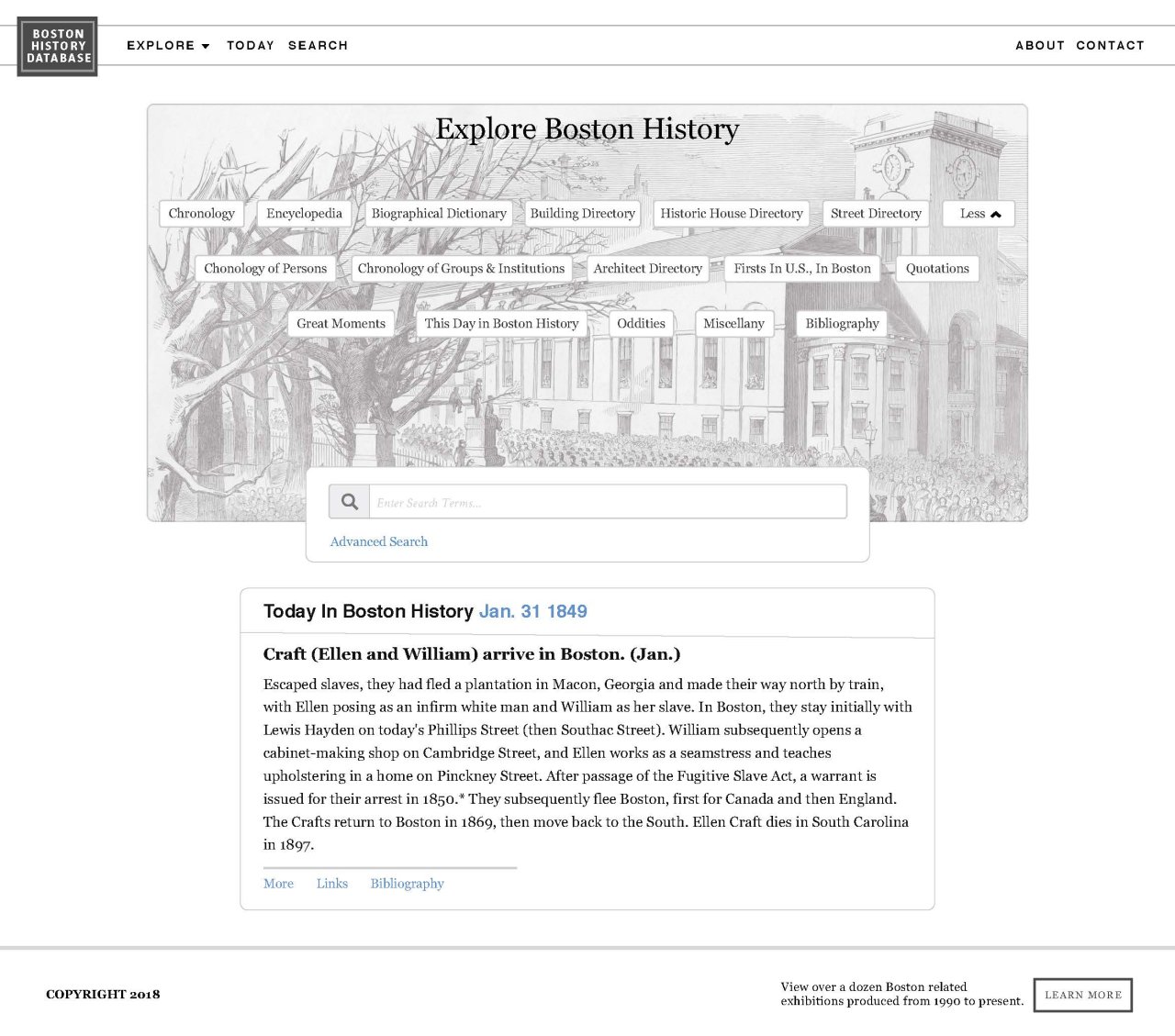Boston History Database Prototype
Designing a People's History of the New Boston: a fun pro-bono project to help some of my colleagues at MIT.
-
On Behalf Of
- Jim Vrabel and Dennis McCarthy
-
Service Provided
Development Problem Solving Prototyping January 16th, 2017 — March 16th, 2017
Boston History Database Prototype
Quickly creating rapid prototypes with sketch and InVision.
I made some prototypes for Jim Vrabel. Who’s Jim you ask?
Jim has recorded all the major events in Boston, all in chronological order. From 15,000 B.C. to the news of today.
His “Boston History Database” now includes entries on 18,000 significant events, 17,000 buildings, and about 6,000 other things like books, movies and paintings.
It used to live in an Excel workbook, but now with the help of a retired MIT software engineer Dennis McCarthy, the data could be searched, sorted, and reassembled in useful ways.
That's when I came in. They tapped me to put some structure to this idea, shaping the concept so that these search features could be useful and usable.
Adding to the mix the ability to create a timeline of every significant event that happened on a particular street, day, or tied to a person's name.
What made Jim’s works so special?
In 2004, Vrabel, who spent a quarter-century working in various capacities in City Hall, published an abbreviated version of his research in a book called “When In Boston: A Time Line and Almanac.” The book has become a well-thumbed resource for reference librarians and journalists, but he said the problem with a book is that it is static. It just sits there; it never changes and grows. But history does. Vrabel never stopped adding to his timeline.
He envisions a curated electronic shape-shifting multimedia encyclopedia of Boston history overseen by an editorial board, and hosted by an established institution. He has approached every potential institution he can think of, he said.
“Everybody thinks it’s a grand idea. And everybody says, ‘Somebody should take it on.’” — Boston Globe Reporter: Billy Baker.
So I did.
Jim Vrabel's two books are "When In Boston" (published in 2004) and "A People's History of the New Boston" (2014).
“We do a good job with the Revolution and the Freedom Trail, but we’re not great with anything else,” he said. “Imagine if you could have that sort of information for every street in the city. You could create an app so you could walk down Beacon Street, and it would tell you everyone who lived there, everything significant that happened in every building. They say technology is outstripping content. Well, I’ve created the content.” — Jim Vrabel,
Entries are limited to a paragraph or two, Jim sticks strictly to the facts because he wants people to string those facts together in their own way, with their own context and narrative.
“Sports is great about this sort of record-keeping. They record the facts and then people string them together into their own narratives. No one to my knowledge has done this so completely for one city,” he said. “And there’s the opportunity to just add and add and add and watch the historical literacy of the entire city grow.” — Jim Vabrel.
Solution

Results
Now you’d think Google had this covered… But something interesting is when it concerns highly tied events and stories, google just doesn’t cover the depth that Jim’s focus brought to the table. This exercise helped me practice a bit of my craft shaping fuzzy ideas. Also got this work on the Boston Globe site.